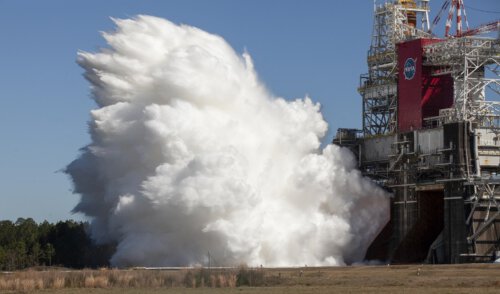The test data verified the successful operation of the rocket system core and will be used for future approval for a test flight * In the initial phase it will be an unmanned test flight around the moon, later the launch system will continue to develop towards the "Artemis 3" program - planned to be the landing of the first woman and the next man on the moon.

The core of the rocket system built by Boeing for NASA's Space Launch System (SLS) today completed the engine test, also known as a "green run", during which a full ignition test (Hot Fire Testing) was carried out at NASA's Stennis Space Center in Mississippi . This is within the green test campaign of the SLS (Space Launch System) rocket. The test data verified the successful operation of the rocket system core and will be used for future approval for a test flight.
John Shannon, SLS vice president and program manager at Boeing, said: "This day is a significant step in deep space exploration. The progress made in the core phase of the SLS is important for NASA and for the national supply chain. The team will use the knowledge of the green run to move forward with our new production system and future phases while delivering the first phase of the test flight."
Liquid hydrogen and oxygen engines
The core of the Boeing-built launch system is powered by liquid hydrogen and oxygen tanks that feed four 25-RS engines built by Aerojet Rocketdyne, which together produce 1.6 million pounds of thrust during testing and during launch. During a mission, the stage engines generate 2.2 million pounds of thrust. During testing, the engines burned for a full duration of 499.6 seconds, which is 8 minutes and 19 seconds, providing critical validation data.
After the test, the core of the rocket system will be moved to NASA's Kennedy Space Center in Florida for the purpose of integrating the system with the spacecraft of the "Orion" lunar payload team - a critical step before the readiness for launch.
This vehicle will fly the first mission of NASA's Artemis program, called "Artemis 1," which will be an unmanned test flight of Orion around the Moon in preparation for future manned missions. Only the Space Launch System (SLS) has the power to launch Orion, the lunar cargo crew, and enable sustainable lunar exploration. Boeing is NASA's prime contractor for building the core of the rocket system in all its stages.
"I want to thank the Rocketdyne Aerojet, NASA and Boeing teams, who overcame storms and a global pandemic to prove the capability and safety of the core of the SLS system," Shannon said.
The space launch system will continue to develop towards the "Artemis 3" program, which is planned to be the landing of the first woman and the next man on the moon. The Boeing Company is already working on developing the capabilities of the rocket system along with creating additional forces that together will be the key to significant human exploration of the moon and Mars.
More of the topic in Hayadan:
